#Vision AI Solution
Explore tagged Tumblr posts
Text
What should I look for in an ERP solution
Everyone says that they have an ERP solution at a wide range of price points. How do I choose one for my SME
Longevity
Check if the ERP solution would meet your requirement 5 years from now when you grow say 5X, add new manufacturing locations, add different lines of business. ERPs not only need to address the growth volume of your business but need to adapt to the business process changes required as you grow.
How easy it is to use
Can your average user learn and adapt easily, this is more relevant for SME organizations trying to embrace ERPs , as they are not in a position to employ specially trained skills for ERP implementation or operations. Your cloud ERP should be intuitive to use and as simple and easy as an e-commerce website. Make sure that the user experience is simple and follows the typical standards of any web application.
A SaaS model helps
A SaaS based ERP allows you to start with very low opex costs and minimal investment. Your opex increases as your business grows and you have a more rational approach towards investment in technology.
What about open source
One major advantage of open source solutions is that there is no license cost to acquire it. Other than that, open source solutions really don't provide any additional benefits to the end customer, most of whom would like to concentrate on their business, rather than trying to change or modify the source code. Secondly since it is open source, support and feature enhancements are driven by the community and the community should be as eager as you to add a feature .
Check the total cost of ownership of open source solutions.
1.Requirement understanding costs
2.License costs
3.Hosting or cloud costs and all the licenses required to run the open source
4.Support costs
5.Cost and reliability of making changes in the solution
The connected EcoSystem
Organizations need to leverage on the connected ecosystem. Does your ERP provide open and easy connectivity to marketplaces, statutory bodies, vendor and customer systems, banks and financial intermediaries. Does it have the capability to provide APIs for easy and quick integration and implementation.
What about AI in ERP?
A number of ERP vendors have started incorporating AI in their ERP solutions, and most of them are Cloud ERP providers. It is impossible to incorporate the infrastructure required for AI on an stand alone ERP system, the costs become prohibitive. Cloud ERPs can build AI capabilities leveraging the cloud infrastructure and share the same infrastructure with all the users.
There are already a number of use cases where AI can be used in an ERP, for instance read unstructured documents / emails using AI and convert them to Sales orders, Expenses, GRN in the ERP. Flag transactions which seem irregular by nature, detect fraud or suspicious transaction, increase planning accuracy using AI, continuous auditing, realtime evaluation of your business partners and Ai driven business analytics and Insights
To conclude
Though most ERP vendors will try and match your requirement document either "out of the box" or by so called "minor" customisation, you need to look beyond the current requirements and ensure that your ERP vendor has a track record of adapting and leveraging trends in technology so that you will be able to stay ahead in the future.
Visit Our Site To Know More :-https://proteustech.in/
#erp#erpcloud#erp software#cloud erp#saas#erpdevelopment#ERP software#software services#proteusvision#vision AI#Vision ERP#ERPsolution#cloud computing#sap erp#cloud accounting#cloud solutions#cloud nonsense#VisionCRM
2 notes
·
View notes
Text
#gyrus#gyrus ai#video anonymization#anonymization software#ai video anonymization software#ai in mam#redaction tool#AI Vision Solutions#Media Asset Management
0 notes
Text
Energy Power automate in pune | India
An inverter, charge controllers, a battery that stores energy, and solar panels that gather sunlight are the essential components of a solar power system. If these were absent, it would be inaccurate to state that the system is functioning well. Your smart house will be energy-efficient and optimized for usage thanks to energy automation, which links the solar power system to the primary energy operations.
#Energy and Power Automation Solutions#Special Purpose Machine Automation | AI-based vision sensors#Warehouse Automation Solutions#Material Handling Processes#Partner in Factory Automation#Electrical & software solutions#Process Automation Partner
0 notes
Text
Leading Vision AI Solutions Providers in India | Pratiti Technologies
Pratiti Technologies stands out as one of the top Vision AI solutions providers in India. Our cutting-edge AI technologies empower businesses with intelligent image and video analytics to enhance decision-making and operational efficiency. Partner with us for innovative Vision AI solutions tailored to your needs.
0 notes
Text
Harnessing the Power of Artificial Intelligence for Workplace Safety
🚀 Ready to see how Artificial Intelligence is transforming workplaces? Visionify is at the forefront of innovation with solutions that leverage AI to enhance safety, productivity, and compliance. Our new blog, “AI for Workplace Safety: The Economic Impact,” dives into the role of AI in creating safer industrial environments.
With Camera AI Technology, companies gain real-time monitoring for Workplace Safety, enabling proactive hazard detection and PPE Compliance assessment. These AI for Workplace Safety solutions make managing risks easier and create safer environments for everyone.
See how PPE Detection and other tools from Visionify are supporting compliance while minimizing incidents. Dive into the future of workplace safety with AI-powered tools designed to make workplaces smarter, safer, and more productive!
Know more.: Vision AI, Workplace Compliance Monitoring, safety tips, PPE Compliance, Easy to use EHs software, Workplace Safety AI solution, Machine Learning for Manufacturing, what is compliance in the workplace, Computer Vision Workplace Safety, Workplace safety Software, AI employee monitoring, safety KPI’s, industrial safety, Industrial safety companies, smoke and fire detector, construction monitoring, hazard analysis, accident prevention, health and safety app, Workplace Safety
#Vision AI#Workplace Compliance Monitoring#safety tips#PPE Compliance#Easy to use EHs software#Workplace Safety AI solution#Machine Learning for Manufacturing#what is compliance in the workplace#Computer Vision Workplace Safety#Workplace safety Software#AI employee monitoring#safety KPI’s#industrial safety#Industrial safety companies#smoke and fire detector#construction monitoring#hazard analysis#accident prevention#health and safety app#Workplace Safety
0 notes
Text
The Need for AI in Media Asset management - Gyrus AI
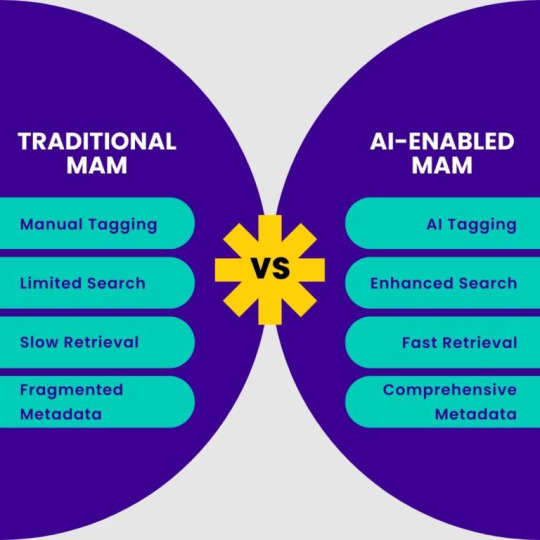
GYRUS AI provides custom AI models for Media Asset Management Search (MAMS). Built for your use case, be it as a broadcaster, advertiser, or media creator, our solutions are tailored to achieve what you require.
More Information About - The Role of AI-Enabled Media Asset Management in Efficient Content Handling
To learn more about how our AI technologies can help your video content perform better, you may contact us at [email protected] or simply click here: www.gyrus.ai
#video anonymization#anonymization software#gyrus ai#redaction software#gyrus#AI in MAM#AI enabled Media Asset Management#Broadcasting Solutions#AI Vision Analytics#AI Video Anonymization Software
0 notes
Text
Industrial Automation and Control
A manufacturing plant's integration of diverse devices, machinery, and equipment forms the basis of industrial automation control systems. However, as previously indicated, they might go one step further and integrate the manufacturing floor system with the rest of the business.
#Energy and Power Automation Solutions#Special Purpose Machine Automation | AI-based vision sensors#Warehouse Automation Solutions#Material Handling Processes#Partner in Factory Automation#Electrical & software solutions#Process Automation Partner
0 notes
Text
AI as a Service (AIaaS): Unlocking the Power of Artificial Intelligence for Businesses
Artificial Intelligence (AI) has become a transformative force for businesses across all industries. However, implementing AI solutions can be complex and resource-intensive. To bridge this gap, AI as a Service (AIaaS) provides a solution that allows businesses to leverage the power of AI without the need for extensive in-house infrastructure or expertise. What is AI as a Service (AIaaS)? AIaaS…
#AI#AI as a Service#AIaaS#Artificial intelligence#business AI solutions#Cloud Services#Computer vision#cost-efficient AI#Digital Transformation#Fiber Internet#Machine learning#NLP#Predictive Analytics#RPA#scalable AI#SolveForce
0 notes
Text
https://saxon.ai/services/azure-ai-vision-suite/
0 notes
Text
PPE Monitoring Solution for Leading Automotive Component Manufacturers

Implementing a PPE monitoring solution for an automotive component manufacturer addresses safety challenges such as unsafe incidents and compliance issues. The solution includes CCTV surveillance for real-time monitoring, integration with SAP and Industry 4.0 for data synchronization, and IoT integration to enhance safety measures. It ensures comprehensive checks for helmets, eyeglasses, shoes, and other PPE, effectively mitigating accidents and promoting workplace safety.
#automotive industry#automotive component manufacturer#ppe monitoring solution#ppe monitoring#computer vision technology#thirdeye ai
0 notes
Text
AI, ML, and Robotics: New Technological Frontiers in Warehousing
New Post has been published on https://thedigitalinsider.com/ai-ml-and-robotics-new-technological-frontiers-in-warehousing/
AI, ML, and Robotics: New Technological Frontiers in Warehousing
Warehouse management is an intricate operation that requires balancing many challenges and risks. Customers increasingly expect fast, accurate deliveries, leading many companies to shift toward “micro fulfillment centers” located close to major urban centers. To fulfill orders quickly while making the most of limited warehouse space, organizations are increasingly turning to artificial intelligence (AI), machine learning (ML), and robotics to optimize warehouse operations. By utilizing AI and ML, warehouse managers can automate and improve components of their operations, such as forecasting demand and inventory levels, optimizing space utilization and layout, improving picking and packing efficiency, and reducing errors and waste. Meanwhile, robotics can perform repetitive tasks with greater accuracy and speed than human workers and operate in spaces too confined for humans. Organizations can harness these technologies to increase profits, enhance safety and security, and increase customer satisfaction and loyalty.
Challenges faced by the warehousing industry
Online commerce is rapidly expanding and evolving, becoming a $4,117.00 billion business in 2024. Customers are turning online for a variety of needs, including groceries. Traditionally, online retailers have stored their inventories in large warehouses outside major population centers. Rapid urbanization has led to many customers living in population hubs in expensive areas, and customers increasingly expect quick—often same-day—deliveries.
Many retailers have addressed this issue by implementing “micro fulfillment centers” near major population centers. Because real estate in these locations is expensive, it is more important than ever that every square foot of warehouse space is well-utilized. Meanwhile, the warehousing industry is dealing with labor shortages, making fulfilling orders in a timely fashion more difficult.
Applications of AI/ML and robotics
Automation, AI, and ML can help retailers deal with these challenges. The advancement of computer vision has expanded the possibilities for robotics in the warehouse space. For example, autonomous mobile robot (AMR) systems are increasingly used for picking (selecting the items that a specific customer has ordered), packing (preparing those items for shipping), and palletization (placing goods on a pallet for transportation and storage). Automating these tasks increases speed, efficiency, accuracy, and adaptability. Robotics can also utilize vertical and cramped spaces that are difficult for humans to access. Warehouse space can be further optimized by introducing innovative, high-density storage solutions like cubes, tubes, and automated storage and retrieval systems.
AI- and ML-powered optimization algorithms analyze massive amounts of real-world data to generate predictions and solutions, updating as more information becomes available. Route optimization helps companies ensure that goods are shipped along the shortest and most efficient routes. Demand forecasting and predictive modeling use past order data to identify patterns and help retailers estimate which products will likely be ordered by customers, ensuring that warehouse space is used efficiently and minimizing the time products spend on the shelves. These models also enable more efficient warehouse storage, as the more frequently ordered items can be stored closer to picking stations.
ML, when paired with sensors on equipment, can also enable predictive maintenance. Continuous monitoring of equipment parts allows warehouses to detect when mechanical parts like rollers or conveyor belts show signs of wear or breakage, allowing them to be replaced before failures happen and minimizing downtime. By implementing robotics and AI/ML-based solutions, retailers can increase accuracy and efficiency while ensuring their limited space is utilized to full capacity.
As AI and robotics are integrated into warehousing, it is vital to consider privacy, ethics, and workplace safety. It is crucial to consider data confidentiality and ensure that AI models do not leak sensitive customer data. Equally important is monitoring AI models for bias. Finally, it is essential to guarantee that robotic and automation solutions comply with Occupational Safety and Health Administration (OSHA) regulations to safeguard the workplace environment.
Key performance indicators for warehousing processes
Monitoring key performance indicators (KPIs) allows enterprises to measure the effectiveness of their warehousing solutions, enabling continuous improvement. A few key KPIs for warehousing include:
Throughput – This represents the number of products successfully passed through a packing station during a set amount of time, for example, the number of orders fulfilled per hour.
Lead time – This figure tracks how quickly shipments can be made.
Cube utilization – This measure of how effectively warehouses use their storage capacity is often calculated by dividing the volume of materials stored by the total warehouse capacity.
On-time in-full (OTIF) shipments – This metric calculates the percentage of orders completed in full by the desired date.
Inventory count accuracy by location – This tracks the degree to which the goods stored in the warehouse correspond to the data. High inventory accuracy is necessary for warehouse analytics to be effective.
Reaping the benefits of AI/ML in warehousing
AI, ML, and robotics are significant components of modern warehousing and will continue to change the industry. According to a recent McKinsey report, companies plan to significantly increase their spending on autonomous warehouse solutions over the next five years. Major retailers like Target and Walmart are pouring millions of dollars into transforming their supply chains and storage operations with AI and ML-powered logistics. Walmart has developed an AI-powered route optimization tool, which has now been made available to other retailers under a software-as-a-service (SaaS) model. The retailer also uses AI to forecast demand and ensure adequate inventory on peak shopping days like Black Friday. These solutions help enhance customer satisfaction while increasing profits and lowering business operating costs. They can also help enterprises deal with challenges, including disruptions to the supply chain and labor shortages.
AI, ML, and robotics are most useful in smaller warehouses and micro-fulfillment centers, where they can optimize limited storage space. In addition to technologies like augmented reality and cloud solutions, they help make quick, accurate deliveries the standard. By monitoring key performance indicators and prioritizing compliance and data privacy, organizations can ensure that they reap the full benefits of AI, ML, and robotics.
#2024#Administration#ai#AI models#AI-powered#AI/ML#Algorithms#Analytics#applications#artificial#Artificial Intelligence#augmented reality#automation#Bias#billion#Black Friday#Business#change#Cloud#cloud solutions#Commerce#Companies#compliance#computer#Computer vision#continuous#customer data#data#data privacy#deal
0 notes
Text
What Is a Computer Vision Engineer? Unlocking the Power of Sight in Machines
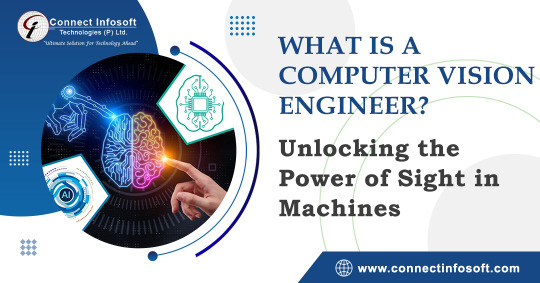
In today's rapidly evolving technological landscape, one of the most remarkable areas of development is computer vision. As humans, our ability to perceive and understand the visual world around us is a fundamental aspect of our daily lives. Similarly, the field of computer vision aims to enable machines to interpret and understand visual data. At the heart of this fascinating domain lies the computer vision engineer, an expert who plays a crucial role in unlocking the power of sight in machines.
In this article, we will delve into the world of computer vision engineering, exploring the responsibilities, skills, and potential applications of this field.
Understanding Computer Vision Engineering:
Computer vision engineering encompasses the design, development, and deployment of systems that enable machines to gain an understanding of visual data. The primary goal of computer vision engineers is to create algorithms and models that can accurately interpret images and videos, replicating human visual perception to some extent. By using artificial intelligence (AI) techniques such as machine learning and deep learning, computer vision engineers equip machines with the ability to analyze, recognize, and make decisions based on visual information.
Responsibilities of a Computer Vision Engineer:
The responsibilities of a computer vision engineer are diverse and demanding. They involve working with large datasets, developing and fine-tuning complex algorithms, and collaborating with cross-functional teams to implement computer vision solutions.
Some key responsibilities include:
1. Data Collection and Preprocessing: Computer vision engineers gather large volumes of visual data and preprocess it to enhance the accuracy of subsequent analysis. This often involves tasks such as data labeling, augmentation, and cleaning.
2. Algorithm Development: Computer vision engineers develop and optimize algorithms that can detect and recognize objects, people, gestures, and other visual cues. They leverage machine learning techniques, such as convolutional neural networks (CNNs), to train models on labeled data and improve their ability to make accurate predictions.
3. Model Evaluation and Optimization: Computer vision engineers evaluate the performance of trained models, fine-tuning them to achieve higher accuracy and robustness. They employ techniques like transfer learning and regularization to enhance the models' generalization capabilities.
4. Integration and Deployment: Once the computer vision systems are developed, engineers work on integrating them into real-world applications. This involves optimizing the models for efficiency, scalability, and compatibility with hardware and software frameworks.
Skills Required:
Becoming a proficient computer vision engineer requires a combination of technical skills and domain knowledge. Some essential skills include:
1. Programming: Proficiency in programming languages such as Python, C++, or MATLAB is crucial for implementing computer vision algorithms and working with relevant libraries and frameworks like OpenCV, TensorFlow, or PyTorch.
2. Mathematics and Statistics: A solid foundation in linear algebra, calculus, probability, and statistics is necessary to understand the mathematical underpinnings of computer vision algorithms and models.
3. Machine Learning: Familiarity with machine learning concepts and techniques is vital for training and fine-tuning models. Understanding topics like supervised and unsupervised learning, neural networks, and optimization algorithms is essential.
4. Image Processing: Knowledge of image processing techniques, such as filtering, segmentation, and feature extraction, allows computer vision engineers to manipulate and enhance visual data before feeding it into models.
5. Problem-Solving and Critical Thinking: Strong problem-solving and critical thinking skills enable computer vision engineers to tackle complex challenges and devise innovative solutions.
Applications of Computer Vision:
Computer vision has many uses in numerous industries. Some famous examples are:
1. Autonomous Vehicles: Computer vision enables self-driving cars to perceive and understand their surroundings, identifying objects, pedestrians, traffic signs, and lane markings to make informed decisions.
2. Healthcare: Computer vision aids in medical imaging analysis, assisting with tasks like tumor detection, disease diagnosis, and surgical planning. It also facilitates remote patient monitoring and analysis of vital signs.
3. Retail and E-commerce: Computer vision is used for product recognition and visual search, allowing customers to find similar products based on images. It also enables automated inventory management and checkout processes.
4. Security and Surveillance: Computer vision systems enhance security by detecting and tracking suspicious activities, recognizing faces, and analyzing video footage for real-time threat detection.
5. Augmented Reality (AR) and Virtual Reality (VR): Computer vision is instrumental in AR and VR applications, overlaying digital information in the real world or creating immersive virtual environments.
Conclusion:
Computer vision engineering is an exciting and rapidly evolving field that empowers machines with the ability to perceive and understand the visual world. By leveraging AI and machine learning techniques, computer vision engineers unlock the potential for machines to analyze, interpret, and make decisions based on visual data. With applications spanning industries like automotive, healthcare, retail, security, and entertainment, the impact of computer vision is revolutionizing our lives. As technology continues to advance, computer vision engineers will play an increasingly vital role in shaping the future of intelligent machines.
#Hire Machine Learning Developer#Machine Learning Development in India#Looking For Machine Learning Developer#Looking For Machine Learning Dev Team#Data Analytics Company#Vision AI Solution#Vision AI Development#Vision AI Software#Vision API#Vertex AI Vision#computer vision engineers#Computer Vision
0 notes
Text
ADVANTAGES OF DATA ANNOTATION
Data annotation is essential for training AI models effectively. Precise labeling ensures accurate predictions, while scalability handles large datasets efficiently. Contextual understanding enhances model comprehension, and adaptability caters to diverse needs. Quality assurance processes maintain data integrity, while collaboration fosters synergy among annotators, driving innovation in AI technologies.
#Data Annotation Company#Data Labeling Company#Computer Vision Companies in India#Data Labeling Companies in India#Image Annotation Services#Data labeling & annotation services#AI Data Solutions#Lidar Annotation
0 notes
Text
Debunking Some Common Misconceptions About AI and Computer Vision
The advancements in artificial intelligence and computer vision over the last few decades have transformed every aspect of our lives. However, the resistance to accept change and novelty in human nature has led to the spread of some misconceptions. Let's analyze some of the common misconceptions about computer vision and artificial intelligence development.
#artificial intelligence development company#best ai development company in India#custom ai development company#computer vision software development company#image processing solution provider in India
0 notes
Text
Special Machinery in pune | India
An automated or semi-automated equipment used to produce a single product or a range of products with extremely particular and unique needs is called a "special machine". These devices are capable of performing a wide range of tasks, including as assembly, packaging, and eyesight tests.
#Special Purpose Machine Automation | AI-based vision sensors#Warehouse Automation Solutions#Material Handling Processes#Partner in Factory Automation#Electrical & software solutions#Process Automation Partner#Revolutionizing Process Automation
0 notes
Text
Artificial Intelligence (AI) Made Easy: A Smart Guide for Small Businesses to Boost Growth
Ever wondered if artificial intelligence (AI) could do wonders for your small business, just like in those big success stories? Well, the answer is a resounding yes! In this guide, we're breaking down the complex AI jargon into simple, actionable steps that won't put you to sleep. Let's explore how AI can revolutionize your customer relationships, streamline your operations, and give your business the boost it deserves.
1. AI's Superpower: Customer Relationships
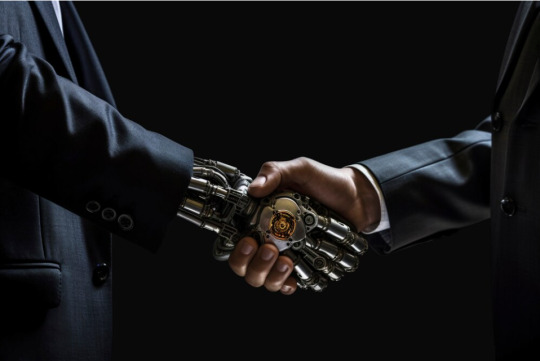
Picture this: Artificial Intelligence (AI) helping you build better connections with your customers. No, it's not a dream! With tools like Salesforce's Einstein Activity Capture, AI can handle customer interactions effortlessly. It's like having a super-smart assistant that not only captures data accurately but also understands what your customers really want. Plus, with emotional analysis during calls (thanks to Cogito Intelligence), you'll always be in sync with your customers' vibes.
2. Talk of the Town: Customer Communication

Don't we all love a quick and helpful response? That's where AI-powered chatbots shine. These virtual helpers not only answer common questions but also work 24/7. So, your customers get instant answers about your business without waiting for office hours. It's like having a round-the-clock assistant, but without the coffee breaks!
3. HR Hero: AI in Human Resources
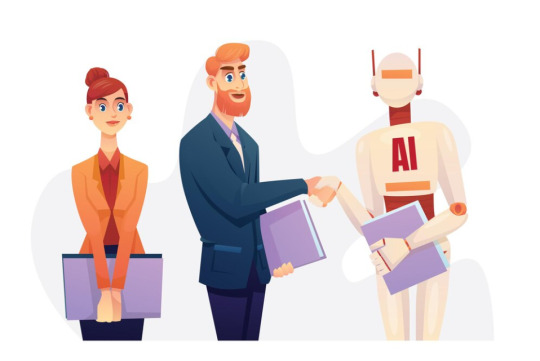
Artificial Intelligence (AI) isn't just for techies; it's a real hero in HR too! Imagine having Google's Hire system automatically sorting through resumes, highlighting the best candidates, and even scheduling interviews. It's like having a personal assistant that's excellent at hiring!
4. Money Matters: AI in Cash Flow Management

Let's talk cash! Predicting cash flow is like predicting the weather for your business. QuickBooks, with its Artificial Intelligence (AI) magic, does just that. It gives you recommendations based on real data, helping you make smart financial decisions. Think of it as your financial superhero, guiding you through the money maze.
5. Secret Weapon: AI for a Competitive Edge

Want to know what your competitors are up to? Artificial Intelligence (AI) can be your secret weapon. Tools like Crayon analyze data from competitors' websites, giving you insights without the manual research headache. It's like having a spy that spills all the beans without breaking a sweat.
6. Bonus Round: More Cool AI Strategies for Your Business
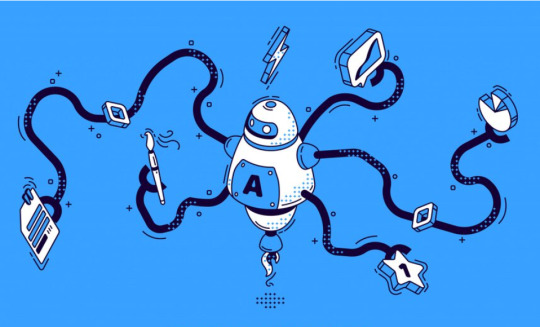
Personalized Marketing Magic: Artificial Intelligence (AI) can analyze your customer data to create personalized marketing campaigns. Imagine sending your customers offers and content they actually care about!
Smart Inventory Tricks: Let Artificial Intelligence (AI) predict what you need in stock and what you don't. Say goodbye to overstock or running out of the good stuff.
Automate the Boring Stuff: Identify those repetitive tasks and let Artificial Intelligence (AI) handle them. It's like having an assistant who loves doing the dull work.
Cybersecurity Buddy: Small businesses need cybersecurity too! Artificial Intelligence (AI) can spot unusual activities and stop cyber threats in their tracks.
Financial Wizardry: Get Artificial Intelligence (AI) to manage budgets, predict cash flows, and analyze financial data. It's like having a financial advisor who never takes a day off.
Chatbots for Super Support: Implement AI-driven chatbots for customer support. Your customers get quick answers, and your team can focus on the big stuff.
Social Media Guru: Let Artificial Intelligence (AI) analyze what's buzzing on social media. Find out what your customers love or dislike and tailor your strategy accordingly.
Sales Psychic: Predict future sales trends with Artificial Intelligence (AI). It's like having a crystal ball that actually works for your business.
User-Friendly Apps: Integrate Artificial Intelligence (AI) features into your mobile apps. Imagine your app understanding users and making their experience unique.
Creative Ally: Use Artificial Intelligence (AI) for design and content creation. It's like having a creative partner that never runs out of ideas.
Market Research Pro: Artificial Intelligence (AI) can help you study market trends and your competitors. Think of it as a research assistant that never takes a lunch break.
Artificial Intelligence (AI) in Training: For ongoing training, use AI-powered e-learning platforms. Each employee gets a personalized training plan.
Smart Hiring: Let Artificial Intelligence (AI) streamline recruitment. It's like having a hiring assistant that knows exactly what you're looking for.
Spy on Competitors: Use Artificial Intelligence (AI) to keep tabs on competitors. It's like having a business detective revealing their secrets.
Artificial Intelligence (AI) in App Development: Integrate AI features into your apps. It's like giving your app superpowers for a standout user experience.
Stay Updated: Keep an eye on Artificial Intelligence (AI) trends. Be ready to adapt your strategies as new and exciting AI technologies emerge.
7. Clearing the AI Fog: Busting Common Myths

Myth 1: AI Is Too Expensive
Nope! Small businesses can afford Artificial Intelligence (AI). Ready-made solutions are out there, and you don't need a whole tech team.
Myth 2: AI Is Only for Big Shots
Wrong! Small businesses have enough data for Artificial Intelligence (AI). Think of it as having a mini AI superhero for your unique needs.
Myth 3: AI Is Too Complicated
Not really! Artificial Intelligence (AI) tools often come with user-friendly interfaces. It's like using apps on your phone—easy and straightforward.
8. AI Adoption Hacks for Small Businesses

Tip 1: Be Specific: Identify exactly what you want Artificial Intelligence (AI) to do. Don't just jump in; think about the specific challenges you want to tackle.
Tip 2: Tidy Up Your Data: Before diving into Artificial Intelligence (AI), organize your data. It's like cleaning up your room before a big makeover.
Tip 3: Plan Strategically: Artificial Intelligence (AI) isn’t a magic wand. Plan how it aligns with your goals and brings in a return on investment. Think strategy, not magic!
Tip 4: Avoid the 'Insights' Trap: Artificial Intelligence (AI) is a tool, not a crystal ball. Use it to make decisions, not just for insights. It's the decisions that count.
Tip 5: Stay Smart and Flexible: The Artificial Intelligence (AI) world moves fast. Stay updated, be smart, and be ready to tweak your strategies as new AI tech comes along.
Conclusion: Partner with Max Vision Solutions for an AI-Powered Business Transformation
In the fast-paced world of small business, Max Vision Solutions emerges as a key ally in unleashing the potential of artificial intelligence (AI). With a rich legacy of 15 years in the industry, Max Vision Solutions not only guides you through this transformative AI journey but also offers tailored solutions to make your business thrive.
As your strategic partner, Max Vision Solutions ensures that AI becomes more than just a technological upgrade—it becomes the driving force behind your business success. From seamless integration of cutting-edge AI tools to personalized strategies, we're here to give your small business the AI makeover it deserves. Trust Max Vision Solutions to simplify, streamline, and elevate your business operations with the power of Artificial Intelligence (AI). Let's embark on this exciting journey together! 🚀
Keywords:
Artificial Intelligence (AI)
Small Business Growth
AI Strategies
Customer Relationships
AI in Human Resources
Cash Flow Management
Competitive Edge with AI
AI Myths
AI Adoption Tips
Max Vision Solutions
Customer Communication
AI-powered Chatbots
Financial Guidance
Predictive Analytics
Market Trends
Cybersecurity
Chatbots for Support
Social Media Analysis
Sales Trends
User-Friendly Apps
Creative AI
Market Research
Spy on Competitors
AI in App Development
AI Trends
Few Title
AI Magic for Small Businesses: Boosting Operations and Growth
#Artificial Intelligence (AI)#Small Business Growth#AI Strategies#Customer Relationships#AI in Human Resources#Cash Flow Management#Competitive Edge with AI#AI Myths#AI Adoption Tips#Max Vision Solutions#Customer Communication#AI-powered Chatbots
0 notes